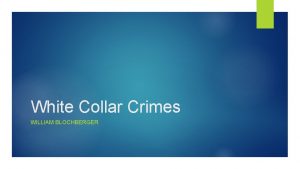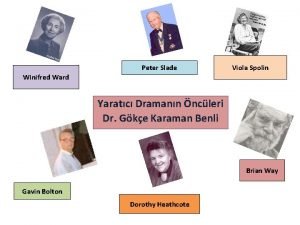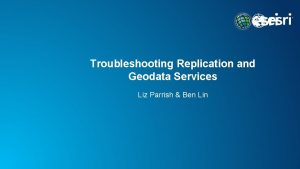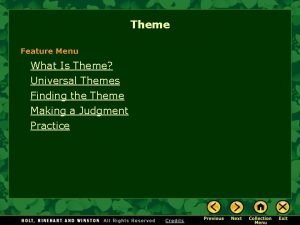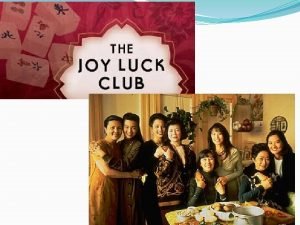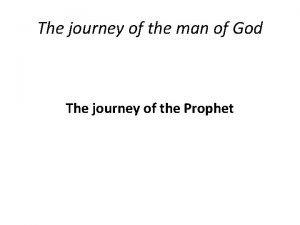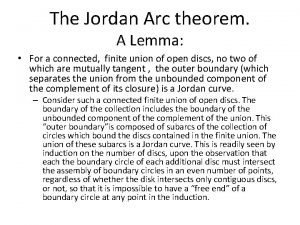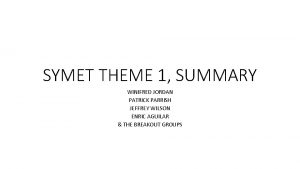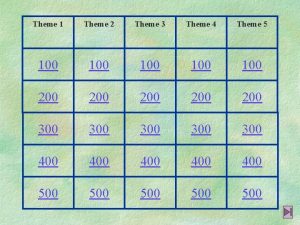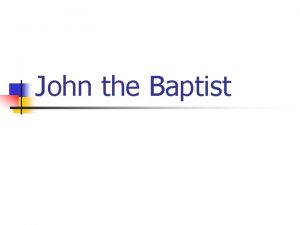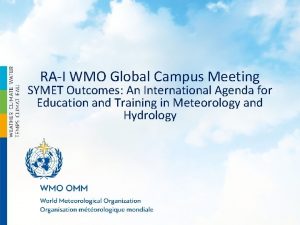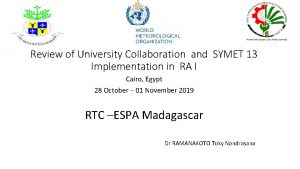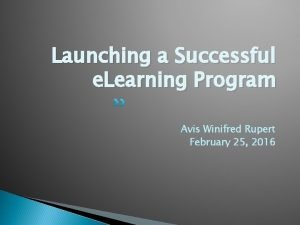SYMET THEME 1 SUMMARY WINIFRED JORDAN PATRICK PARRISH












- Slides: 12

SYMET THEME 1, SUMMARY WINIFRED JORDAN PATRICK PARRISH JEFFREY WILSON ENRIC AGUILAR & THE BREAKOUT GROUPS

DAY 1 AT SYMET. Theme I: Service Specific Education and Training Needs - Day one at SYMET was dedicated to the discussion of Theme I, Service Specific Education and Training Needs. The Rapporteur, Dr. Winifred Jordan, summarized the outcomes of the day’s presentations in 5 categories: 1. 2. 3. 4. 5. Competency-related Training Pathways Training Challenges Evaluation and assessment Other - Next slides offer further details on each category

1. - Competency related • • Review and adapt competencies frameworks, Competency framework used to guide the provision of services Training events should be competency-orientated Assessment of individual against the competencies helps identify training gaps Guidance on assessment of competency framework for climate services will be valuable How do you access and utilize the training available for competencies? The satellite skills and knowledge framework has been published. NWP and Radar skills frameworks are in review. Conduct training needs analyses, using competencies as measuring stick

2. - Training Pathways • Identify effective learning solutions • Develop general training pathways for job roles • Create personal learning pathways to become a professional (competent). • Share example learning pathways • Develop detailed training plans, and share these • Develop needs-based and customer-based training

3. - Training Challanges • Client-orientated teaching/learning – new research available and more required for better client-aimed services • Personalized learning in connection with environment via “lnternet of Things” • Problem-centred vs. discipline-centred learning • Holistic training-considering all job roles, thinking, and problem solving skills required • Need to teach thinking—not just content acquisition. • Need to offer training and learning guidance

4. - Evaluation/assessment • Share examples how to do learning and competency assessment of the individuals • Evaluation of NHMSs (what are the criteria? ) • Evaluate the training through its ability to help the institution meet its goals • Conduct training impacts evaluations for ongoing improvements

5. - Other • Manifesto suggested 4 critical skills for meteorologists: 1. 2. 3. 4. meteorological competencies, core skills as a scientist, personal and interpersonal skills, ethical and professional interaction with broader skills • Employers value capabilities to combat difficulties and solve problems more than deep knowledge of meteorology. • We still need a common understanding of BIP-M and BIP-MT and ways to assess compliance. • Use of a common Training calendar • Knowledge about strategies for initial and continuing professional development (Update) • WMO Global Campus / Meteorological alliance to improve collaboration and sharing

Breakout groups (I) • Many of the recommendations from the breakout groups are reflected in the previous slides. Other recommendations from the Breakout Groups, bring different views or discuss additional topics, e. g. : • Should we define/rank the quality of training and training institutions? • Use online platforms to share education and training resources • Find strategies to increase fellowship opportunities (to achieve qualifications, advance education and professional skills) • Provide standard, shared technology platforms for training • Provide training design guidance to RTCs • Encourage partnerships between NHMSs, RTCs, and Universities

Breakout groups (2) • Address the needs of language diversity. • Create methods to demonstrate the benefit of regional training centres and national met training centres to stakeholders. • Training organisations should be able to demonstrate return on investment • Include private sector in partnerships to increase funding potential sources (ensuring mutual benefit) • Sharing training capabilities, expertise and resources • Promote professional mentoring programs for exchange of expertise • Promote a culture of life-long learning • Provide clear guidance on the application of WMO publications

Breakout groups (3) • Address the needs of language diversity. • Create methods to demonstrate the benefit of regional training centres and national met training centres to stakeholders. • Training organisations should be able to demonstrate return on investment • Include private sector in partnerships to increase funding potential sources (ensuring mutual benefit) • Sharing training capabilities, expertise and resources • Promote professional mentoring programs for exchange of expertise • Promote a culture of life-long learning • Provide clear guidance on the application of WMO publications

Breakout groups (4) • Define methods for establishing credit equivalency tables for international education programmes. • Create better relationships between PRs and national training departments to enhance support. • Better connect the technical commissions and the training organisations. • Connect training needs with potential suppliers in an open marketplace. • Explore WMO Global campus as a mechanism to increase partnerships, education and training options, shared platforms and expertise to even the level of capabilities, and alternative education and training pathways. • Include private sector in partnerships to increase funding potential sources.

 Winifred jiau
Winifred jiau Brain way göre drama
Brain way göre drama Geodata services
Geodata services Theme for english b poem analysis
Theme for english b poem analysis Difference between genre and theme
Difference between genre and theme What is the difference between theme and universal theme?
What is the difference between theme and universal theme? Theme vs universal theme
Theme vs universal theme Rose hsu jordan
Rose hsu jordan 1. what game do the members of the joy luck club play?
1. what game do the members of the joy luck club play? Elijah and elisha journey map
Elijah and elisha journey map What is jordan arc
What is jordan arc Michael jordan bodily kinesthetic intelligence
Michael jordan bodily kinesthetic intelligence Imagery in the great gatsby chapter 3
Imagery in the great gatsby chapter 3
